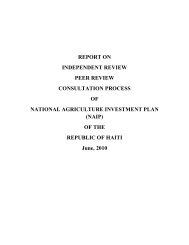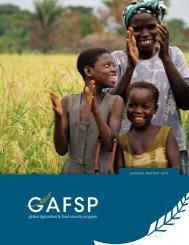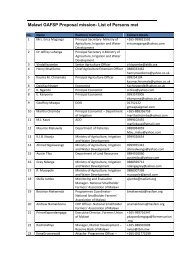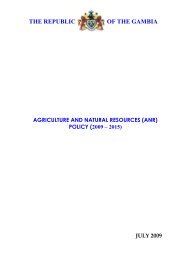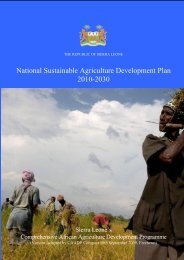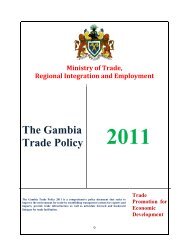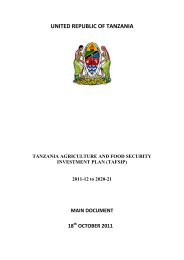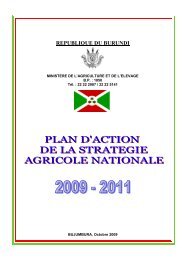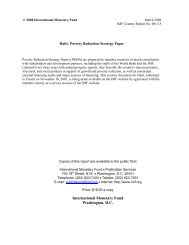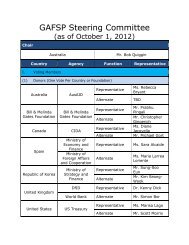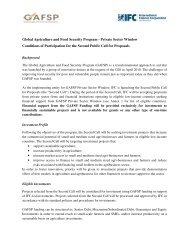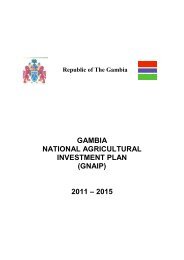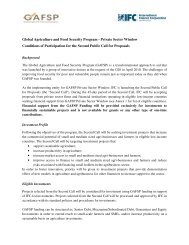World Bank Project Appraisal Document - GAFSP
World Bank Project Appraisal Document - GAFSP
World Bank Project Appraisal Document - GAFSP
You also want an ePaper? Increase the reach of your titles
YUMPU automatically turns print PDFs into web optimized ePapers that Google loves.
learned from countries with water management issues similar to those in Tajikistan will be an<br />
important element of national capacity building, particularly in areas such as national water laws,<br />
water management institutions and water use regulations.<br />
38. Support to establish the Ministry of Water Resources. Under the proposed water sector reforms,<br />
the MAWRM will be transformed into a Ministry of Water Resources with responsibility for strategic<br />
planning, policy and regulatory functions in the water sector. The water sector will undergo radical<br />
change and reforms, adopting an Integrated Water Resources Management (IWRM) approach and<br />
moving away from the management of water resources according to administrative boundaries to<br />
management by hydrological boundaries, through establishment of River Basin Organizations. The<br />
institutional reforms of the water sector provides for clear separation of roles and responsibilities<br />
between policy and guidance (through a Water and Energy Council), policy development and<br />
regulation (through Ministry of Water Resources in line with IWRM principles) and water delivery<br />
(through independent organizations – Mirob for irrigation water delivery) and operations. To support<br />
this process, the project will assist the MAWRM to identify and transfer the policy and regulatory<br />
roles that will reside with the MWRM, and to re-assign other roles and responsibilities to other<br />
elements of the new institutional structure for water resource management. Transformation of the<br />
MAWRM into the MWRM may also require the transfer of some policy making and regulatory tasks<br />
currently assigned to other line Ministries involved in the water sector (e.g. responsibility for<br />
regulation of water abstraction permits for surface and groundwater). This re-assignment of roles and<br />
responsibilities will be a challenge. Current water resource management functions are dispersed<br />
among several agencies, with significant overlap and duplication of functions, roles and<br />
responsibilities. These roles will have to be re-assigned to the new institutional framework, which<br />
includes the National Water and Energy Council, MWR, River Basin Commissions and River Basin<br />
Management Agencies. The project will assist GoT to draft the charters, decrees, amendments and<br />
other regulations required to formally establish the MWR.<br />
39. Support for the establishment of a Water Resources Information Center. The project will<br />
provide support to MAWRM or it successor to establish a consolidated water resources database as the<br />
basis for national water resources planning and programming. Multiple institutions are currently<br />
involved in water resources monitoring and data collection, which is often conducted for a limited<br />
number of parameters and with limited geographical coverage. No consolidated system is in place for<br />
data collection, management and data sharing.<br />
40. The water resources database will be developed through the coordinated acquisition of water<br />
resources data from all relevant organizations. To this end the MIWRM will coordinate closely with<br />
other information centers pertaining to the water sector and institutions dealing with the monitoring of<br />
water quantity and quality; and develop effective procedures for data sharing between agencies. The<br />
database will be developed as a spatial data facility to allow the consolidation, exchange and use of<br />
geospatial data and related information resources across an information sharing community. The<br />
database is expected to be accessible to registered users and the public in a hierarchical manner.<br />
41. Initially, database development will focus on collecting data for the Kafernigan basin. The<br />
database will include information on the hydrographic network, available hydrometric data, the<br />
existing quantity and quality monitoring network, delineation and characterization of protected areas,<br />
water resource management infrastructure (dams, irrigation, and hydropower plants); water abstraction<br />
information by location and time; and the location of known point pollution sources, including the<br />
29



